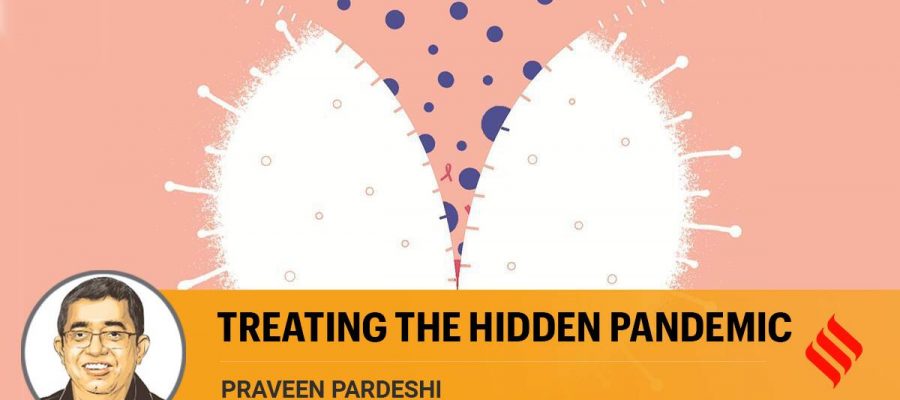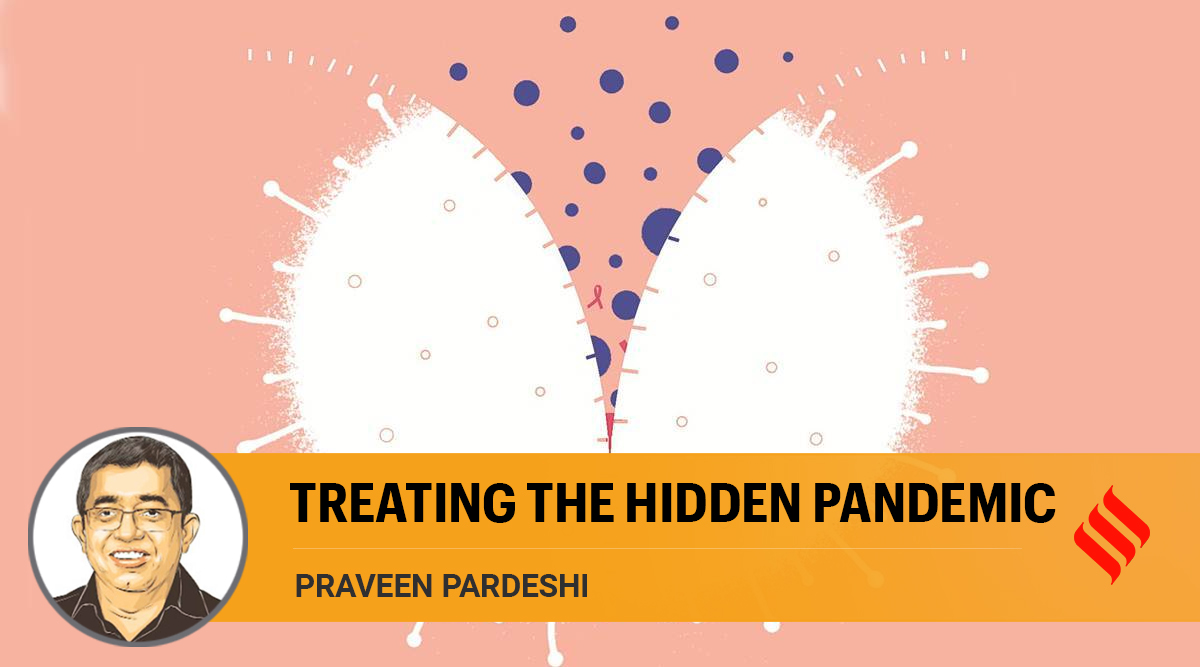Praveen Pardeshi writes: Studies have shown that over 70 per cent of mortalities associated with Covid are due to underlying noncommunicable diseases like diabetes, cardiovascular ailments and cancer
The second wave of Covid has left India shaken. However, despite the spike in cases, the average Covid patient in India faces 50 per cent less risk of mortality compared to the global average. India’s Covid case fatality at 1.16 per cent is nearly half of the global average of 2.17 per cent.
Is this a statistical aberration or are there deeper underlying causes? Many studies have shown that over 70 per cent of mortalities associated with Covid are due to underlying noncommunicable diseases (NCD) like diabetes, cardiovascular ailments and cancer. India’s remarkable efforts at reducing mortalities due to NCD like chronic lung diseases and cardiovascular diseases (CVD) have yielded positive outcomes for reduced Covid case fatality. A comparison with other countries in the neighbourhood shows India’s better performance in Covid fatality rates is related to its controlled NCD mortalities. India’s NCD mortality rate at 558 per 1,00,000 population is significantly less than its neighbours and, correspondingly, the Covid case fatality rate in India is significantly better.
A study led by the Defeat NCD team and guided by this writer, along with the Economist Intelligence Unit and Viatris shows that every 10 per cent decline in the underlying NCD mortality rate (an indicator that society is becoming healthier) leads to 20 per cent decline in Covid fatality rates, after factoring in variables like demographics and public health expenditure. The Covid pandemic is simply an X-ray revealing the underlying noncommunicable disease pandemic.
What is India’s NCD strategy? India began implementing the multi sector NCD action plan to achieve 25 per cent reduction in premature mortalities due to NCD by 2025. The Atmanirbhar Swasth Bharat scheme is a major initiative, which will invest over Rs 64,000 crore in setting up 17,800 rural and 11,000 urban health and wellness centres, 602 critical care hospitals in districts and associated chain of laboratories and virology centres. India’s investments in strengthening primary health care and providing financial protection to nearly 100 million people under the Ayushman Bharat programme and the Pradhan Mantri Jan Arogya Yojana are of critical importance.
Under Ayushman Bharat, India has expanded the scope of primary healthcare to include screening and diagnosis of NCD like CVD, cancer and chronic respiratory diseases. Nearly 1,20,000 primary health care centres which were earlier focused only on vaccinations against communicable diseases and mother and child care are being converted into health and wellness centres where primary care for NCD is becoming available. The PM’s health insurance scheme covers 100 million of the most vulnerable population and eliminates out-of-pocket expenditures for the poorest which could be as high as 72 per cent if not covered by public insurance.
The replacement of polluting fuel wood with LPG under the PM Ujjwala Yojana in 90 million families has significantly reduced the risk of the chronic lung diseases and cancer that women were exposed to. The results are slowly visible in the steady decline in NCD mortality rates since 2014.
The Defeat-NCD Partnership at the United Nations Institute of Training and Research had organised a call to action at the margins of the World Health Assembly to jointly tackle the twin challenges of the Covid pandemic and the underlying NCD morbidities. India’s Health Minister Dr Harsh Vardhan, the health ministers of Rwanda, Gambia and Qatar, the president of Islamic Bank and WHO participated in it. A key lesson emerging from this international call to action was to synergise the strengthening of health sector by ensuring universal access to screening for NCD and application of AI paired with telemedicine to continue healthcare for NCD patients to overcome the severe challenges which the lockdown imposes on continuity of health services. The vaccination against Covid, the track and trace strategy and Covid testing are opportunities to detect undiagnosed patients living with diabetes or cardiovascular diseases and providing them with telemedicine-based protocols of self-care so that the risk of falling prey to Covid is minimised. Ultimately, India, like the world, will be able to come out of the Covid pandemic by strengthening health infrastructure through the Atmanirbhar Swasth Bharat programme so that the overall disease burden in society like diabetes, CVDs and cancer are reduced. Achieving the SDG by reducing one-third of premature mortalities due to NCD will make India resilient to the viral pandemics of the future.
This column first appeared in the print edition on June 2, 2021, under the title ‘Treating the hidden pandemic’. The writer is global programme coordinator, Defeat-NCD Partnership, UN Institute for Training and Research, Geneva and former Mumbai Commissioner
Source: Read Full Article



